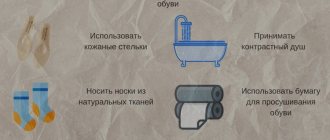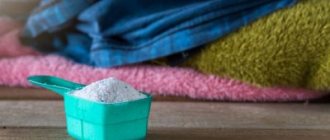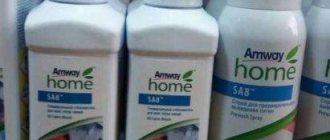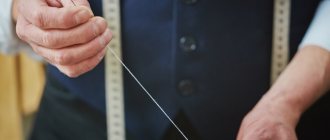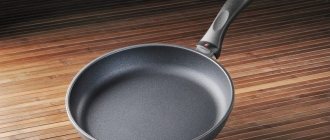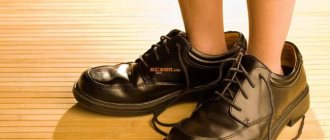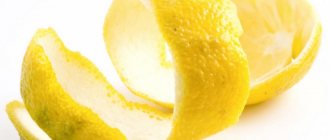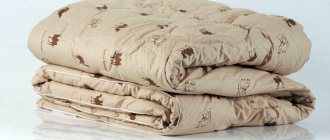Feet stench is a consequence of increased hyperhidrosis, the causes of which must be sought and eliminated with the help of special treatment, but you can also pay attention to simpler ways to prevent the unpleasant odor, for example, shoe insoles from the smell of sweat. Purchasing them is not difficult, the main thing is to make a choice, because such devices come in several varieties.
Criterias of choice
Human feet have a large number of sweat glands. When the thermoregulation process is disrupted in the surface layer of the skin, these sweat glands begin to produce too much sweat, resulting in a warm, moist environment created in the shoe, in its enclosed space, which is very favorable for the activity of pathogenic microorganisms. They are the main source of stench, creating significant discomfort for a person.
There are many reasons for increased foot sweating, including poor foot hygiene, the use of socks made of synthetic materials, and small, tight shoes. More serious factors that provoke dysfunction of the sweat glands on the soles of the feet may be hormonal imbalances or the presence of endocrine diseases. Therefore, this problem cannot be ignored; it is recommended to consult a specialist and undergo the necessary medical examination. In the meantime, until the exact cause is established, you can use special liners designed to get rid of the smell of foot sweat. They are very easy to use: just put them in your shoes and they will immediately start working. In addition, the insoles are washable, which ensures long-term use.
Different types of inserts allow you to cope with the most unpleasant situations: reduce the amount of sweat produced, destroy bacteria and eliminate stench, prevent the appearance of fungus and corns, and give your feet freshness and aroma. Therefore, before you make a purchase, you need to decide for yourself the basic criteria that your earbuds must meet. There are general principles that you also need to pay attention to. So, the insoles should be:
- Soft,
- Plastic, easy to bend,
- Suitable for specific shoes: no wrinkles in the toe,
- Do not move when walking.
High-quality inlays made from natural materials have the following characteristics:
- Durability as a guarantee of long-term use,
- Ergonomic design for comfortable walking
- Hypoallergenic, thanks to which there is no fear of irritation or itching,
- Maintaining optimal temperature inside the shoes, due to which the feet do not sweat (thermoregulation),
- Antibacterial effect: by providing it, insoles not only destroy the unpleasant odor of sweat, but also prevent the development of fungal diseases.
Causes of sweating
This happens for several reasons:
- Natural internal causes. When excessive sweating is a natural hereditary factor. In this situation, no matter what kind of shoes we buy, and no matter how often and carefully we try to perform hygiene procedures for our feet, the result will still not be comforting, and our feet will still sweat a lot. But if we cannot influence sweating in such a situation, then it is quite possible to prevent the smell.
- External reasons. Excessive sweating of the feet is not always a natural phenomenon; it can often be acquired as a result of incorrectly selected and poor-quality shoes. And also in case of insufficient hygiene procedures.
External causes of leg hyperhidrosis are easy to eliminate. To do this, it is enough to carry out timely foot hygiene, use only socks made of natural fabrics, without any synthetics, and buy high-quality leather shoes. Genuine leather shoes do not obstruct air flow to the feet, and do not cause excessive sweating or unpleasant odor. Poor-quality and artificial shoes, on the contrary, provoke sweating with a very unpleasant odor.
After all, when the skin does not breathe, it naturally sweats heavily, and a moist, sweaty environment is ideal for the life of various microbes and bacteria. It is the waste products of such bacteria that cause the unpleasant odor.
Natural internal causes of sweating create a lot of discomfort and there is practically no way to prevent them. After all, this is how the human body works. But in such a situation, it is still quite possible to prevent an unpleasant odor. After all, it is against odor that special insoles have been developed that can absorb moisture. The use of such anti-sweat and odor insoles will keep your feet dry and comfortable.
Kinds
There are several types of insoles designed to combat sweat odor. Firstly, all earbuds are divided into fixed and removable. Removable insoles, in turn, are either disposable or reusable.
Among the reusable inserts, in accordance with their functional characteristics, there are:
- Inserts with carbon filter,
- Antifungal insoles,
- Linen,
- Silicone,
- Leather or suede liners,
- Insoles for winter shoes: felt, wool or multi-layer.
How do insoles for sweat odor differ from each other?
Now let's talk about the differences on which the significant difference between the available types of insoles is based. The first thing a person who wants to get rid of unpleasant foot odor needs to decide is what kind of liners he needs: removable or fixed. Here you need to be guided by the following rule: if the sweating of your feet is moderate, then you can try to get by with fixed insoles. They benefit from the fact that they do not wrinkle because they do not come out of the shoes. However, if there is increased sweating, it is better to opt for removable liners, because they allow the possibility of washing, drying or replacing when it becomes necessary.
If you have a problem such as foot hyperhidrosis, it is recommended to pay attention to disposable insoles - with them your feet will always remain fresh. The action of such devices is designed for 12-20 hours, after which it should be replaced with a new pair.
Disposable liners have an outer and an inner layer. Surface has a bactericidal and deodorizing effect, due to which the unpleasant odor is absorbed, and its source - pathogenic microorganisms - is destroyed. The inner layer acts as the main moisture absorber, which is why the shoes remain dry and clean for half a day. Of course, this method of protection involves certain financial costs. For those who want to save money and get the desired effect for a longer time, reusable inserts are offered. But even here there are some nuances, since there are a lot of such insoles, and they all differ from each other. Let's figure out what exactly.
- Inserts with carbon filter. They are called so because their inner layer is made of activated carbon - an excellent absorbent that not only absorbs moisture, but also prevents the formation of pathogenic microflora. The main condition for their long service is regular drying and ventilation. It's best to do this daily.
- Antifungal insoles. Judging by their name, their main purpose immediately becomes clear. These liners consist of two layers: top and bottom. The outer layer is made of cotton fabric and impregnated with special antifungal drugs. The inner layer is latex, which ensures reliable fixation of the liner inside the shoe.
- Linen insoles are another type of liners that have an antiseptic effect and absorb sweat well. It is recommended to use them for summer shoes. Their main advantage is easy washing and fairly quick drying.
- Silicone insoles are also intended for use in the summer. They prevent the development of fungus on the feet and between the toes, and at the same time reduce the load on the soles, thereby reducing sweating in these areas. Silicone earbuds also require careful care: they must be washed daily with laundry soap and then dried well.
- Leather and suede inserts are an excellent option for demi-season shoes. These products are multi-layered, the top layer is a surface made of leather or suede, while the remaining layers are a latex base, necessary for maximum comfort of feet in shoes. Such insoles need to be ventilated daily, but these measures alone are not enough, therefore, to prevent the inserts from quickly becoming unusable, they additionally need to be washed - for this, 2-3 times a week is enough.
The range of footwear products includes insert options designed for use in cold weather. For those people whose priority is the strength of such products, felt insoles are suitable: they do not deform and retain their shape for a long time. In frosty weather, wool liners can serve as an alternative, which not only provide air exchange, but also reliably protect from the cold. There is a fundamental difference between multi-layer devices, or, as they are otherwise called, sandwiches: they are made of several different layers: cork, polymer and wool, thanks to which they fight the consequences of hyperhidrosis and save in severe frost.
What is sweat
Sweat is an aqueous solution of organic substances and salts. Sweating is most often a protective reaction of the body against overheating: either with increased physical activity or with rising ambient temperatures. The evaporation of moisture from the surface of the body removes excess heat, thus the sweat glands play the role of thermoregulators. The secretion released onto the surface of the skin helps cool the body and allows us to maintain the optimal temperature of our body.
Causes of unpleasant odor
Sweat itself does not have a distinct odor. Normally, every person’s body contains many bacteria. They feed on sweat and dead skin particles, actively reproduce in a warm, closed environment, and the unpleasant odor is caused by their waste products.
Sweating and foot odor in women is not a myth. Representatives of the fair half are also people, and this phenomenon is quite physiological. However, excessive sweating of the feet can ruin a lady’s reputation at a party, cause inconvenience when trying on shoes in a store, and also annoy family members. To prevent people from keeping their distance from you, you need to identify the causes of the unpleasant odor and eliminate them. If you notice that your feet are sweating a lot, take action immediately, otherwise you are creating favorable conditions for the appearance of fungus, which will be more difficult to get rid of. Let's look at ways to treat unpleasant foot odor in more detail.
Material
Reusable insoles differ from each other not only in their impregnation, but also in the material from which they are made.
- Latex ˗ is used to produce antifungal insoles, as well as inserts with a carbon filter. Such devices are created from a foamed latex base, the only difference is that some insoles are impregnated with activated carbon, while others are impregnated with antifungal drugs. Accordingly, the main function of these products is different: if carbon inserts are intended, first of all, to absorb excess moisture, because coal acts here as an absorbent substance, then antifungal insoles are aimed at preventing the development of fungus and only then at protecting the feet from excessive sweating. The advantages of latex are wear resistance and elasticity; such liners do not wrinkle or undergo deformation. Latex inserts are also universal in size, that is, they provide the opportunity to cut them yourself, whatever your foot needs.
- Linen is a natural fabric used in the production of insoles. Such products are made from non-woven fabric. Due to the fact that the plant contains phenols, human skin experiences a beneficial effect, but fungi and other pathogenic microorganisms are effectively destroyed. In addition, the positive properties of flax include:
- Moisture absorption: linen non-woven fabric is characterized by a developed internal fiber structure, due to which this fabric absorbs excess moisture well, thereby creating a comfortable microclimate inside the shoes,
- Creating coolness: linen inserts provide ventilation of the foot thanks to those air gaps that, even under the pressure of a person’s foot, remain between the fibers of the fabric,
- Elimination of unpleasant odor: insoles made from flax fight not only excess sweat, but also the waste product of bacteria - stench, and this happens due to the content of natural antibacterial components,
- Creating shock absorption: linen inserts have the ability to mold to the shape of the foot in accordance with its individual characteristics, they not only reduce the load on the feet, but also create a feeling of stability in the shoes,
- Antistatic effect: linen inserts have little resistance; they transmit static charge from the human body to the sole of the shoe and thereby reduce the occurrence of spark discharges.
- Silicone is a durable, soft, plastic and heat-resistant material that has a number of advantages:
- Maintains foot hygiene
- Redistributes pressure and reduces stress on the feet,
- Improves blood circulation in the lower extremities,
- Fixes the foot well in the correct position,
- Prevents the formation of calluses.
- Leather and suede - such materials are usually used in conjunction with latex, and if the main task of the latex base is to create comfortable conditions for the feet, then leather and suede provide absorption of excess moisture, as well as “breathing” for the soles of the feet.
- Materials for insoles in winter shoes: felt and wool. If we compare these two varieties, it is fair to say that woolen liners are warmer, but in terms of practicality they are significantly inferior to felt products. Insoles made from natural sheep wool are highly breathable, wear-resistant, highly hygroscopic, create a feeling of comfort, protect from cold, can be washed and dry quickly afterwards.
Price
Prices for insoles designed to eliminate sweat odor vary, which is largely determined by the material from which these products are made.
The simplest inserts with a carbon layer cost about 350 rubles, but their cost can reach 1000 rubles ˗ this is determined by additional functions (for example, such products can also be orthopedic: with a heel pad ˗ to reduce the load in the heel area, orthopedic shock-absorbing, orthopedic with memory to relieve the effect of tired feet, with the addition of cotton and coconut ˗ for wearing shoes without socks, etc.).
The starting price of antifungal liners starts at 90 rubles. Linen insoles cost about the same (100-1120 rubles - average cost). Silicone traces are much more expensive; their price range is from 500 to 2500 rubles. Within 300-700 rubles, you can purchase products made from genuine leather or suede for your shoes.
And finally, felt and wool liners are the most affordable financially. Their average cost is 100-200 rubles, and the price depends on the number of layers, the height of the pile, as well as the presence or absence of special layers or orthopedic bends.
Life time
Many buyers suffering from foot hyperhidrosis place high hopes on special shoe inserts, believing that their use will completely solve the problem. However, this is a big misconception: insoles designed to eliminate unpleasant odors are not a treatment, but only a means that helps eliminate unwanted symptoms. In addition, their effect does not last forever: if you put them inside your shoes, you should not hope that they will last for several years. Sooner or later, you will have to throw away the earbuds and buy a new pair to replace the old ones. The service life of such products is determined by the type of insoles: if the effect of disposable inserts is designed for only 12-20 hours, then reusable products can be used for up to 3 months. The appearance of a stench is the first sign that the insoles have become unusable. You need to remember: in order for the earbuds to last as long as possible, you need to keep them clean. But we’ll talk about how exactly to care for them below.
Effect of application
Moisture-wicking insoles keep feet dry and warm. The products eliminate unpleasant odors, ensuring freshness all day long.
Their regular use has many positive effects:
- Foot fungus can be cured in 5-10 days;
- Prevention of fungal and infectious foot diseases;
- Elimination of weeping calluses;
- Disappearance of unpleasant odor;
- Foot cushioning due to latex foam.
How to properly care for insoles
Any liners require proper care. Manufacturers of such products recommend drying them after each use. This means that the insoles must be removed after each wear and thoroughly dried naturally. To ensure complete drying, it is not at all advisable to place the insoles on a radiator or dry them over gas: such measures can cause the inserts to lose their shape, become warped and become hard. In addition, shoe accessories should be washed several times a week, but do not use aggressive cleaning agents, as they can only cause harm. It is also not recommended to refresh insoles in a washing machine; in this regard, hand washing using a special soft brush is preferable.
Inserts made of silicone require special care. After each use, they should be washed under running water and soap. The water should be warm, and the cleaning agent should be liquid and soft in its effect. Such products are dried with the adhesive side up, and are glued only to a clean and dry surface of the shoe. It is not recommended to leave the earbuds in direct sunlight or in extremely low temperatures - silicone insoles do not tolerate this.
Features of attachment to the sole
A high-quality insole should fit snugly to the foot, be comfortable and comfortable for constant use. There are two main types of fastening to shoes, each of which has its own advantages and disadvantages:
- Fixed. Today on sale you can find insoles stitched or glued to the sole. They have improved performance and increased wear resistance, but cannot be removed for cleaning or replacement. They are recommended for use in cases of mild hyperhidrosis or as prophylaxis after treatment.
- Removable insoles for hyperhidrosis can be easily removed from shoes for replacement or washing. They can be disposable or reusable depending on the model.
The method of fastening directly affects the operating characteristics of the product. When choosing a particular insole for your feet, take into account the degree of disease and the design of the shoe.
We recommend reading: Socks against sweaty feet
How to get rid of the smell of sweat in shoes
Sometimes airing alone is not enough to keep your shoes fresh, so you have to look for other methods to keep them looking their best. There are many simple methods that involve the use of available and inexpensive tools that help you easily cope with this task. Let's look at them.
- After soaking a cotton swab in hydrogen peroxide, you need to thoroughly wipe the inside of the shoe. As an alternative to peroxide, you can use ethyl or ammonia, vodka or manganese solution - any of these agents has the deodorizing and antiseptic properties necessary in this situation.
- Flour, starch or baking soda are excellent adsorbents, so in order to eliminate excess moisture, one of these substances should be poured into a small canvas bag and then placed inside the shoe. If you don’t have such a rag bag at hand, you can simply pour the product onto damp places, and after a few hours, shake it out or remove it with a vacuum cleaner.
- A little higher, we looked at insoles with a layer of coal and mentioned that this substance well absorbs moisture released by the surfaces of the feet. At home, if you don’t have factory insoles with a carbon filter on hand, you can resort to using activated carbon tablets. However, do not forget that they can leave unwanted black marks in shoes, so it is best to place the substance in a cloth bag and only then put it inside.
- The unpleasant odor can be destroyed by pouring tea leaves, dry cloves or mint leaves into your shoes. In the east, the problem of shoe stench is solved with a more drastic method: green tea is simply poured inside shoes or sandals and then dried.
- The inner surface of the shoes can be wiped with a slice of lemon, and then sprinkled with ground oak bark. Usually this method helps to cope with even the most persistent and long-standing unpleasant odor.
For those who do not pursue the goal of saving money, shoe stores offer more convenient ways to combat the stench - these are deodorants, creams, tablets, as well as the liners we reviewed. All these methods are really effective, but we should not forget about preventive measures: regular drying and washing of insoles, foot hygiene, using cotton socks instead of synthetic ones and changing them daily. If you follow these rules, it will be much easier to combat foot hyperhidrosis and its undesirable consequences.
Rules of application
Scented insoles have a universal size and are cut to the desired contour. Using an adhesive strip, the products are securely fixed inside the shoes.
Insoles need to be replaced as they wear out. When treating fungus or infectious diseases of the feet, the products are used once and then disposed of.
Reviews
Dear readers, your opinion is very important to us - therefore, we will be glad to hear your feedback about shoe insoles for the smell of sweat in the comments, this will also be useful to other users of the site.
Faith
My son goes to the gym and plays football, and, naturally, we are familiar with the problem of shoe odor. At a shoe store I bought special insoles for him with a carbon filter; we have been using the same pair for two months now. Of course, if it weren’t for proper care of them, they would have been in the trash a long time ago. But in general, I can say that these liners help very well: no excess moisture, no smell of sweat, so I recommend purchasing them!
Elena
I’m probably the least fortunate of all: while men have excessive sweating of their feet, which is practically the norm, then women have a real problem. The terrible fetid smell constantly prevented me from leading a normal life, I probably tried all the folk recipes, but to no avail. But one day, when I was buying sneakers for myself, I noticed a display case with insoles, the manufacturers of which so reassuringly declared that these products would help cope with the stench. So I decided and bought some: some with charcoal, others antifungal. I put them in my shoes one at a time, air them out every day, and wash them several times a week. I can’t say unequivocally which of them is better, I like both types.
